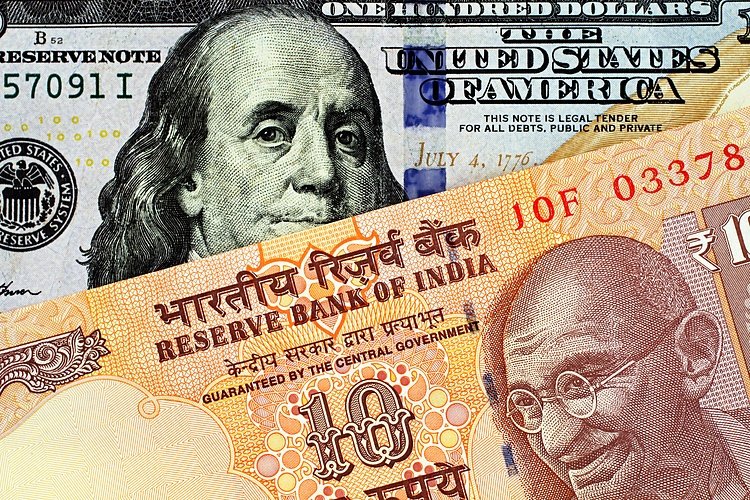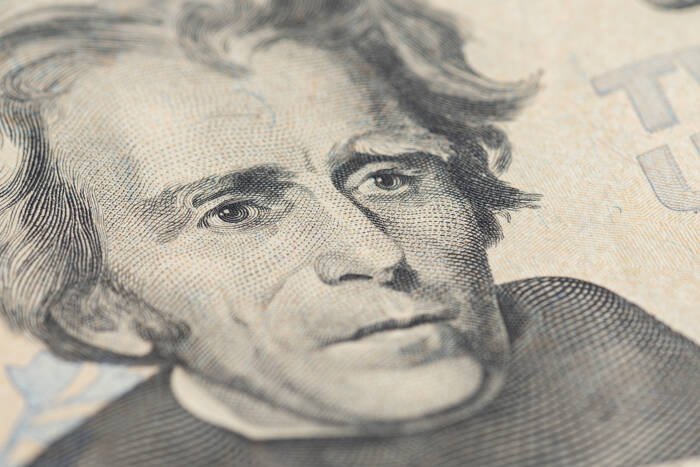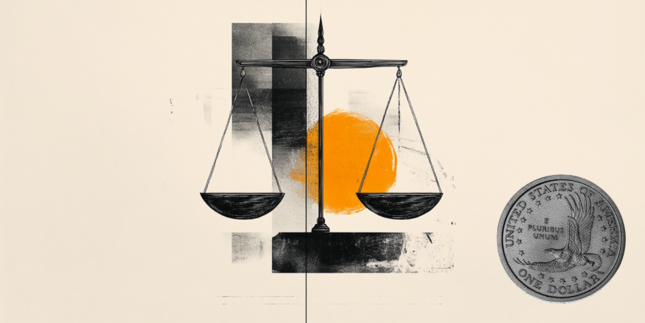- The Indian Rupee remains steady in Wednesday’s Asian session.
- Rising US Treasury yields and significant foreign outflows could weigh on the INR; RBI’s intervention might cap its downside.
- Investors await the advanced US Q3 GDP data for fresh impetus.
The Indian Rupee (INR) trades flat on Wednesday amid the consolidation of the US Dollar (USD). Rising US Treasury bond yields and sustained foreign outflows from domestic stocks might exert some selling pressure on the INR. Nonetheless, a further decline in crude oil prices might support the Indian Rupee as India is the world’s third-largest oil consumer. Additionally, the downside for the INR might be limited as the RBI has been intervening regularly to prevent the local currency from depreciating.
Looking ahead, traders will keep an eye on the US October ADP Employment Change, the advanced US Q3 Gross Domestic Product (GDP), and September Pending Home Sales, which are due later on Wednesday. The Indian market will be closed on Friday for the occasion of Diwali.
Daily Digest Market Movers: Indian Rupee flat lines ahead of the key US economic data
- Foreign investors have withdrawn $10 billion from India’s equity and debt markets in October, the heaviest month of selling this year.
- The RBI has projected the Indian economy to grow at 7.2% in FY25, with Q2 at 7.0%, Q3 at 7.4%, and Q4 at 7.4%.
- Nomura noted that the Indian economy has entered a phase of “cyclical growth slowdown” and the RBI’s estimate of 7.2% GDP expansion is “overly optimistic.”
- Job openings arrived at 7.44 million, compared to the 7.86 million (revised from 8.4 million) seen in August, according to the US Bureau of Labor Statistics (BLS) in the Job Openings and Labor Turnover Survey (JOLTS) on Tuesday. This figure came in below the market expectation of 7.99 million.
- The US Conference Board’s Consumer Confidence Index rose to 108.7 in October from an upwardly revised 99.2 in September, beating the estimation of 99.5.
- Traders have priced in nearly 98.4% odds of a 25 bps rate cut by the Fed in the November meeting, according to the CME FedWatch tool.
Technical Analysis: USD/INR keeps the bullish vibe in the longer term
The Indian Rupee trades on a flat note on the day. The constructive outlook of the USD/INR pair remains unchanged, with the price holding above the key 100-day Exponential Moving Average (EMA) on the daily timeframe. The path of least resistance level is to the upside, as the 14-day Relative Strength Index (RSI) stands above the midline near 59.20.
The immediate resistance level for the pair emerges at the upper boundary of the ascending trend channel of 84.22. Extended gains could pave the way to 84.50, followed by the 85.00 psychological level.
On the other hand, sustained trading below the lower limit of the trend channel near 84.05 could expose USD/INR to a possible move down to 83.76, the 100-day EMA.
Indian Rupee FAQs
The Indian Rupee (INR) is one of the most sensitive currencies to external factors. The price of Crude Oil (the country is highly dependent on imported Oil), the value of the US Dollar – most trade is conducted in USD – and the level of foreign investment, are all influential. Direct intervention by the Reserve Bank of India (RBI) in FX markets to keep the exchange rate stable, as well as the level of interest rates set by the RBI, are further major influencing factors on the Rupee.
The Reserve Bank of India (RBI) actively intervenes in forex markets to maintain a stable exchange rate, to help facilitate trade. In addition, the RBI tries to maintain the inflation rate at its 4% target by adjusting interest rates. Higher interest rates usually strengthen the Rupee. This is due to the role of the ‘carry trade’ in which investors borrow in countries with lower interest rates so as to place their money in countries’ offering relatively higher interest rates and profit from the difference.
Macroeconomic factors that influence the value of the Rupee include inflation, interest rates, the economic growth rate (GDP), the balance of trade, and inflows from foreign investment. A higher growth rate can lead to more overseas investment, pushing up demand for the Rupee. A less negative balance of trade will eventually lead to a stronger Rupee. Higher interest rates, especially real rates (interest rates less inflation) are also positive for the Rupee. A risk-on environment can lead to greater inflows of Foreign Direct and Indirect Investment (FDI and FII), which also benefit the Rupee.
Higher inflation, particularly, if it is comparatively higher than India’s peers, is generally negative for the currency as it reflects devaluation through oversupply. Inflation also increases the cost of exports, leading to more Rupees being sold to purchase foreign imports, which is Rupee-negative. At the same time, higher inflation usually leads to the Reserve Bank of India (RBI) raising interest rates and this can be positive for the Rupee, due to increased demand from international investors. The opposite effect is true of lower inflation.








